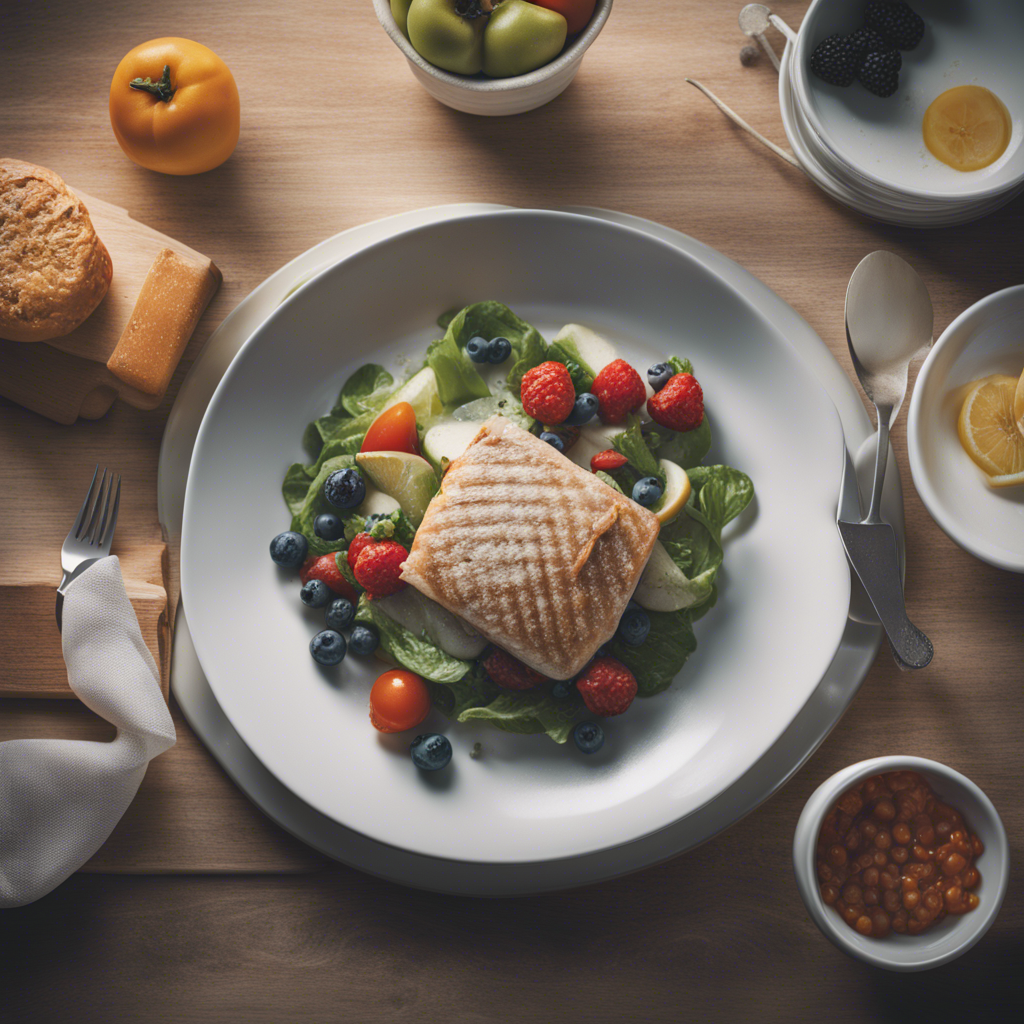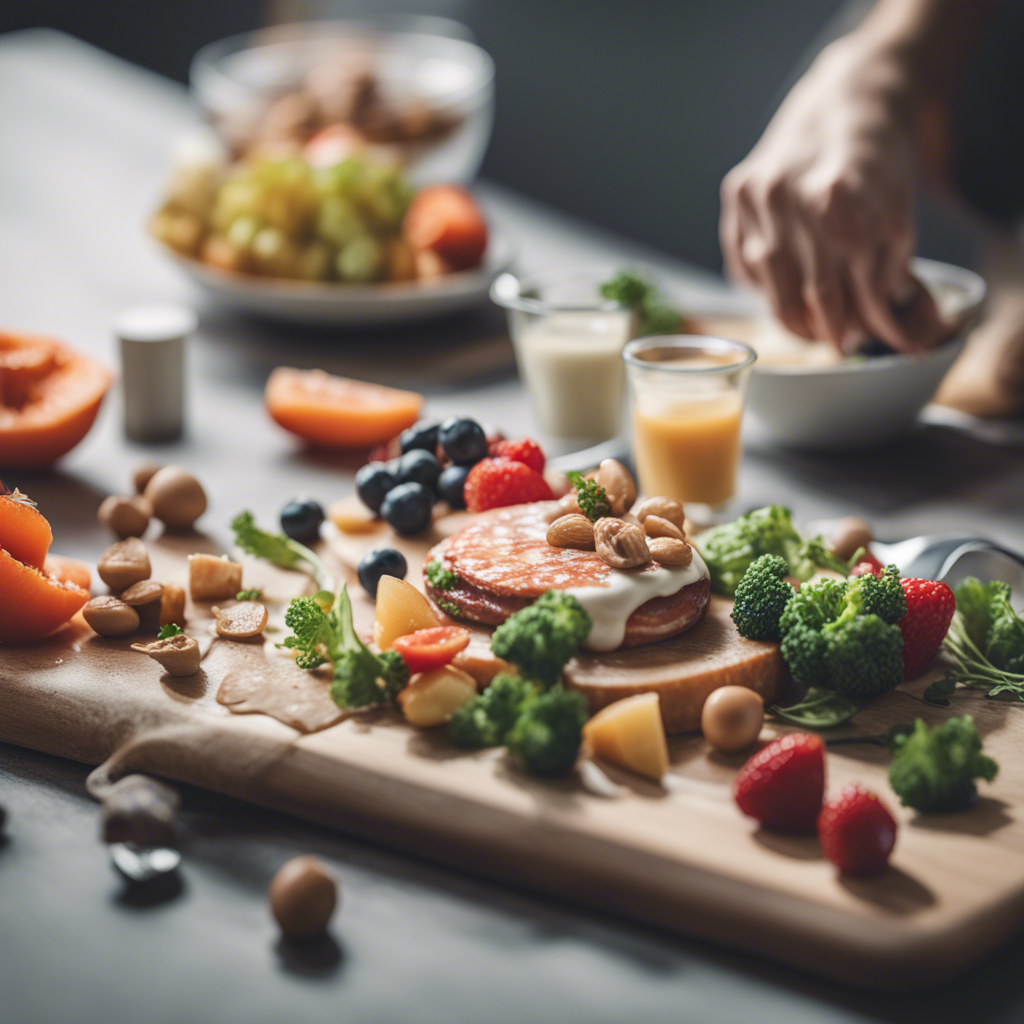The 80/20 Rule for Dieting: How to Eat What You Love and Still Lose Weight
The world of dieting is often seen as a complex landscape, often entwined with rigorous meal plans and restrictive food choices. However, the 80/20 rule for dieting shines a beacon of hope for those seeking a more relaxed yet effective path to weight loss. This approach offers a flexible dieting strategy, allowing you to lose weight while eating your favorite foods. By focusing on balance and moderation, the 80/20 rule helps cultivate sustainable healthy eating habits.

The 80/20 rule for dieting, derived from the Pareto Principle, suggests that 80% of your dietary intake should consist of nutritious, healthy foods, while the remaining 20% can include less healthy indulgences. This approach fosters a realistic and achievable diet plan that aligns with busy lifestyles and the natural human inclination for variety and enjoyment. It’s a strategy that doesn’t demand perfection, but rather encourages nutritional balance and conscious consumption, conducive to weight loss and muscle gain, particularly in a vegetarian diet for weight loss.
Understanding the 80/20 Rule in Dieting
What Is the 80/20 Rule?
The 80/20 rule is a concept borrowed from the Pareto Principle, which states that 80% of effects come from 20% of causes. In dieting terms, this means that 80% of the time, you focus on eating nourishing, whole foods, while 20% of the time, you allow yourself to indulge in less nutritious options. This rule is less about restriction and more about creating a sustainable, long-term relationship with food that supports weight loss and a healthy lifestyle.
Benefits of the 80/20 Rule
Adopting the 80/20 rule offers numerous benefits. It minimizes the guilt associated with ‘cheat meals’ and encourages a balanced diet that promotes weight loss while still allowing for occasional indulgences. This method can significantly boost psychological and emotional wellbeing, reducing the stress associated with stringent diets. Additionally, it can lead to better adherence to healthy eating habits due to its flexible nature.
Challenges and Considerations
While the 80/20 rule is a flexible approach, it requires mindfulness and self-regulation. The main challenge is to not let the 20% indulgence escalate beyond its boundary, which can quickly derail weight loss efforts. Staying aware of portion sizes and frequency of indulgence is crucial. Additionally, blindly categorizing foods without considering their nutritional profile can lead to imbalances. A structured plan and a keen understanding of nutritional balance can mitigate these challenges.
Applying the 80/20 Rule to Vegetarian Diets for Weight Loss and Muscle Gain
Principles of a Vegetarian Diet Under the 80/20 Rule
A vegetarian diet for weight loss and muscle gain can thrive under the 80/20 rule with careful planning. Focusing on plant-based whole foods such as legumes, grains, fruits, and vegetables for the 80% ensures a high intake of essential nutrients. By incorporating diverse protein sources like lentils and chickpeas, one can support muscle gain while shedding excess weight.
Incorporating Flexibility
For the 20% indulgence, vegetarians might include foods like vegetarian pizza or plant-based desserts. The beauty of the 80/20 rule is in its flexibility, allowing room for a slice of cake or a scoop of ice cream without guilt. This flexibility supports long-term dietary adherence, maintaining both health goals and satisfaction.
Practical Meal Planning
Practical application of the 80/20 rule in a vegetarian diet involves mindful meal planning. Start by stacking your grocery list with 80% whole, plant-based food choices. Plan meals that emphasize a variety of nutrients, balancing carbohydrates, proteins, and fats. Save your 20% for occasions where you genuinely crave something special. This approach not only fosters healthy eating habits but also paves the way for a balanced diet that supports weight management and muscular development.
The Balance of Flexible Dieting with Weight Loss Strategies
Flexible Dieting Explained
Flexible dieting is an approach that emphasizes balance rather than restriction. It embodies the philosophy that no foods are inherently “bad” and that dietary success is based on overall patterns rather than daily ritualistic restrictions. With flexible dieting, individuals can enjoy varied dietary options while maintaining control over caloric intake.
Integrating the 80/20 Rule with Flexible Dieting
The 80/20 rule naturally complements flexible dieting. By allowing for dietary variety and occasional indulgences within a predominantly healthy eating routine, it helps sustain weight loss without feelings of deprivation. This integration makes it easier to follow through with diet plans, given that both approaches prioritize long-term sustainability over immediate, often short-lived, results.
Nutritional Balance in Practice
Applying nutritional balance with the 80/20 rule and flexible dieting involves understanding macronutrient distribution. For example, maintaining a good balance between carbohydrates, proteins, and fats supports healthy body function and weight loss. Use the 80/20 rule to guide you in portion sizes and frequency of enjoyment, ensuring your intake contributes positively to your weight loss goals.

Frequently Asked Questions about the 80/20 Rule for Dieting
How does the 80/20 rule help with weight loss?
The 80/20 rule aids weight loss by promoting a balanced diet weight loss strategy where 80% of food intake is nutritious and 20% allows for indulgences. It maintains caloric awareness while reducing guilt, leading to sustainable weight loss through improved eating habits and nutritional balance.
Can the 80/20 rule be applied to a vegetarian diet?
Absolutely. A vegetarian diet for weight loss and muscle gain can integrate the 80/20 rule effectively. Focus the 80% on vegetables, grains, and legumes, ensuring adequate protein and nutrient intake. The flexibility of the rule allows vegetarians to indulge occasionally while still working towards their health goals.
What are some examples of 20% foods?
Examples of 20% foods might include a piece of chocolate, a small serving of chips, or a scoop of your favorite ice cream. The key is moderation and frequency. Even within the 20%, it’s wise to aim for the healthiest version of these treats whenever possible.
Is the 80/20 rule suitable for everyone?
The 80/20 rule is generally suitable for most individuals, as it’s designed to be flexible and adaptable. However, people with specific dietary restrictions or medical conditions should consult with a healthcare provider to tailor the approach to their specific needs.
How do I measure the 80% and 20% in my diet?
Measuring 80% and 20% can be done by considering the total calories consumed over a week. Calculate 80% of total calories for healthy options and 20% for indulgences. Tracking meals in a food diary can help maintain this balance effectively.
Conclusion
The 80/20 rule for dieting exemplifies the principle that balance is attainable and beneficial. By focusing primarily on nutritious foods, you support your health and weight loss goals while retaining the freedom to enjoy your favorite foods in moderation. This approach not only supports physical health but also fosters a positive relationship with food, enhancing mental and emotional well-being.
Incorporating the 80/20 rule within various diet plans, such as a vegetarian diet for weight loss or flexible dieting, demonstrates its adaptability and effectiveness. It’s a viable weight loss strategy for anyone looking to achieve nutritional balance without the stress of rigid meal plans.
Ultimately, the 80/20 rule for dieting offers a refreshing perspective on eating, proving that you don’t need to sacrifice enjoyment for health. Embrace this harmonious approach and watch as you achieve your weight goals while relishing the foods you love.
Suggested Video Topics
- Implementing the 80/20 Rule in Vegetarian Diets for Weight Loss
- Flexible Dieting: Balancing Indulgence with Health Goals
- Tracking Nutritional Balance with the 80/20 Rule



